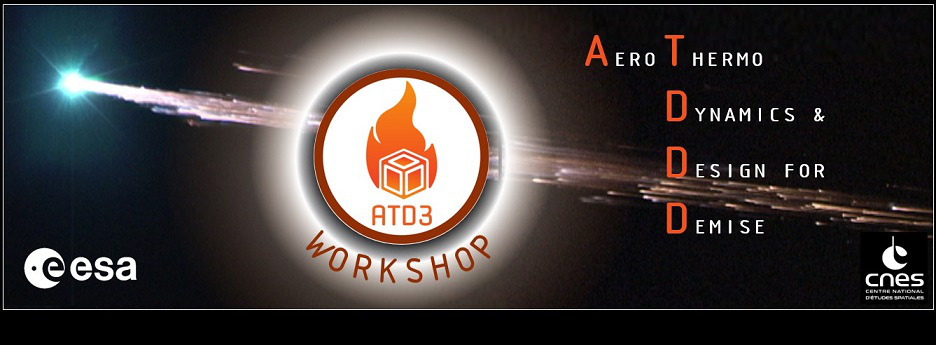Speaker
Description
To properly account for non-equilibrium in high enthalpy flows, state-to-state (StS) kinetics should be the most reliable, describing internal distributions departing from the Boltzmann. Due to the large dimension of the chemical system, this model requires computational time not affordable on nowadays computers, and most of the applications were limited to 1D geometries [1-3]. In recent years, a 2D fluid dynamic code has been developed including the StS kinetics [4], fully exploiting the multi-GPU computer using CUDA-MPI library [5]. The model has shown its versatility, being applied to the study of the expansion of the Ti plasma plume produced by laser ablation in nitrogen environment.
Recently, the 2D code has been improved to include a detailed catalysis model [6], trying to reproduce recent experimental results, obtained in CIRA for very high enthalpy and very low pressure flow hitting a copper sphere. The finite-rate partial catalysis model provides results that are closer to the experimental ones than those obtained by a fully catalytic approach. Among the different StS catalytic models the outcomes have shown that the surface recombination on only the highest energy level gives more accurate results.
To extend the number of applications the code has been also applied to a high enthalpy flow over a double wedge [7]. Numerical results obtained by the StS model have been compared with those obtained by multi-temperature Park model and those reported by Hao et al [8s]. Results show differences in peak heat flux and in dissociation degree of oxygen, showing the need of StS kinetics also for oblique shocks.
[1] G. Colonna, L. D. Pietanza, A. Laricchiuta, Ionization kinetic model for Hydrogen-Helium atmospheres in hypersonic shock tubes, International Journal of Heat and Mass Transfer 156 (2020) 119916
[2] G. Colonna, M. Capitelli, The influence of atomic and molecular metastable states in high-enthalpy nozzle expansion nitrogen flows, Journal of Physics D: Applied Physics 34 (12) (2001) 1812
[3] I. Armenise et al., Nonequilibrium vibrational kinetics during hypersonic flow of a solid body in nitrogen and its influence on the surface heat-flux, Plasma Chemistry and Plasma Processing 15 (3) (1995) 501–528
[4] M. Tuttafesta, G. Colonna, G. Pascazio, Computing unsteady compressible flows using Roe’s flux-difference splitting scheme on GPUs, Computer Physics Communications 184 (6) (2013) 1497–1510
[5] F. Bonelli et al. An MPI-CUDA approach for hypersonic flows with detailed state-to-state air kinetics using a GPU cluster, Computer Physics Communications 219 (2017) 178–195.
[6] F Bonelli, G Pascazio, G Colonna, Effect of finite-rate catalysis on wall heat flux prediction in hypersonic flow, Physical Review Fluids 6 (2021), 033201
[7] D. Ninni, F. Bonelli, G. Colonna, G. Pascazio, Unsteady behavior and thermochemical nonequilibrium effects in hypersonic double-wedge flows, submitted to Acta Astronautica.
[8] J. Hao et al. Numerical investigation of hypervelocity shockwave/boundary-layer interactions over a double-wedge configuration, International Journal of Heat and Mass Transfer 138 (2019) 277–292

